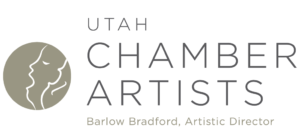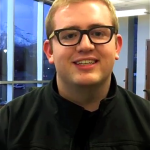REVIEW – Utah Chamber Artists offer splendid evening of music
UTAH CHAMBER ARTISTS, Libby Gardner Concert Hall, University of Utah, Feb. 27
For over 20 years now the Utah Chamber Artists, under the direction of Dr. Barlow Bradford, has been presenting works for chamber orchestra and choir. Monday night was their latest concert, “Psalms and Symphonies,” in which the group mostly presented works that drew inspiration from the biblical book of Psalms.
The program began with an a cappella choir singing a text set by Henry Purcell from the 102nd Psalm: “Hear my prayer, O Lord, and let my cry come unto thee.” The music began unified, but soon broke into several independent lines in a slow, steady counterpoint. The choir seemed tightly tuned into Bradford’s direction, keeping excellent intonation and phrasing throughout.
Soon the choir was joined by Douglas O’Neill sitting at the impressive pipe organ in Libby Gardner Concert Hall. A series of accompanied choir works followed, including a lovely John Rutter composition that featured cellist John Eckstein. These pieces were performed with admirable clarity and precision, with only a few isolated instances of balance and intonation issues. Thankfully, these small problems never lingered.
Two organ solos performed by O’Neill were intermingled with the progression of choral works during the concert, and often filled the concert hall with a towering sound. The organ works provided a nice diversity to the evening’s music, but weren’t as polished as the other works presented by the various ensembles.
After a brief intermission, a chamber orchestra and members of the University Singers also appeared onstage for a performance of Igor Stravinsky’s magnificent Symphony of Psalms. Stravinsky is most well known for a series of shocking ballet scores written between 1910 and 1913, culminating with The Rite of Spring. Symphony of Psalms is a work in an entirely transformed style and uses a vastly different neo-classical voice to convey a newly acquired spirituality by the composer.
The opening movement was executed with needed vigor, building to a towering and climactic conclusion that echoed through the hall after the cutoff. The second movement began as a fugue, with independent lines intertwining in a complex dance of counterpoint and harmony. The lines gradually began to unify, only achieving the full unification at the conclusion of the movement. The massive third movement alternated between hushed moments and driving energetic sections. The music became more and more aggressive, only to end somber and quiet.
The Utah Chamber Artists presented an interesting, varied concert and did so very well. The musicianship, presentation and repertoire were nearly always captivating, and Stravinsky’s masterwork was a worthy conclusion to a splendid evening of music.

